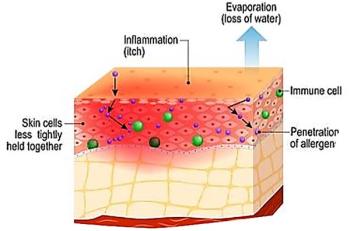
Hygiene Hypothesis About Childhood Asthma Supported by Swedish Study
Microorganisms encountered during early-life animal exposure may increase risk for respiratory infections but also decrease risk of asthma via immune modulation.
[[{"type":"media","view_mode":"media_crop","fid":"43764","attributes":{"alt":"","class":"media-image media-image-right","height":"246","id":"media_crop_7077891278748","media_crop_h":"0","media_crop_image_style":"-1","media_crop_instance":"4844","media_crop_rotate":"0","media_crop_scale_h":"0","media_crop_scale_w":"0","media_crop_w":"0","media_crop_x":"0","media_crop_y":"0","style":"float: right;","title":"©ErikIsselee/Shutterstock.com","typeof":"foaf:Image","width":"384"}}]]A nationwide study in Sweden that included more than 1 million children has suggested that exposure to dogs and farm animals during the first year of life may lower risk of asthma. The study was published in the November issue of JAMA Pediatrics.1
“For what we believe to be the first time in a nationwide setting, we provide evidence of a reduced risk of childhood asthma in 6-year-old children exposed to dogs and farm animals. This information might be helpful in decision making for families and physicians on the appropriateness and timing of early animal exposure,” wrote first author Tove Fall, PhD, of Uppsala University, (Uppsala, Sweden), and colleagues.
Asthma affects about 4% to 9% of Scandinavian children aged 6- to 12-years, according to background information in the article. Second-hand tobacco smoke, exposure to domestic cats and dogs, birth order, microbials, type of delivery, and socioeconomic factors have all been proposed as environmental factors that may influence the risk of childhood asthma.
Despite research that shows early-life exposure to domestic pets can decrease the risk of childhood asthma, there is contradictory evidence as well. Some case-control studies, birth cohorts, and meta-analyses have suggested decreased risk of asthma with exposure to dogs, while other studies have suggested increased risk.
Uppsala University researchers used registry data to identify dog owners, farm owners, and all children born in Sweden between January 2001 and December 2010 (n=1,011,051, of which 276,298 were school-aged and 376,638 were pre-school-aged). Swedish dog owners are legally required to register a dog in the Swedish Board of Agriculture National Dog Register, which captures about 80% of dogs in the Swedish population. Researchers evaluated asthma only during the seventh year of life for school-age children, and from age one year until the end of the study for preschool-aged children. The analysis ran from January 2007 to September 2012.
Results showed:
⺠Asthma cases:
-- School-aged children: 11,585
-- Pre-school aged children: 28,511
⺠Dog exposure during the first year of life was linked to:
-- Lower risk of asthma in school-aged children (OR, 0.87; 95% CI, 0.81-0.93)
-- Lower risk of asthma in preschool-aged children ≥3 years (HR, 0.90; 95% CI,0.83-0.99)
-- Higher risk of pneumonia (HR, 1.13; 95% CI, 1.06-1.20) and other lower respiratory tract diseases (HR, 1.06; 95% CI, 1.00-1.13) in preschool-aged children
⺠Children age <3 years who were exposed to dogs did not have lower risk of asthma (HR, 1.03; 95% CI, 1.00-1.07).
⺠Farm animal exposure was linked to:
-- Lower risk of asthma in school-aged children (OR 0.48; 95% CI, 0.31-0.76)
-- Lower risk of asthma in preschool-aged (HR, 0.69; 95% CI, 0.56-0.84)
-- No association with lower respiratory tract diseases in pre-school aged children
⺠Results were similar when adjusted for confounders like socioeconomic factors, parental asthma, first-born children, and different definitions of asthma
“Our findings are in accordance with the hygiene hypothesis, which links a favorable maturation of the immune system with exposure to microbes in childhood...” the authors concluded. “We speculate that dog exposure may increase an infant’s overall exposure to microorganisms and allergens, some of which increase the risk for respiratory tract infections and others that modulate the immune system in such a way that decreases the risk of allergy-related asthma in school-aged children.”
Take Home Points
- First nationwide, large prospective study in Sweden has shown that dog and farm animal exposure during the first year of life is linked to lower risk of asthma in school-aged children and pre-school aged children over 3 years.
- Results were similar when controlled for socioeconomic factors, parental asthma status, and different definitions of asthma.
- Results confirm past reports of strong associations between early childhood exposure to farm animals and decreased asthma risk.
References:
Fall T, Lundholm C, Ãrtqvist AK, et al. Early exposure to dogs and farm animals and the risk of childhood asthma. JAMA Pediatr. 2015;169:e153219. doi:
http://archpedi.jamanetwork.com/article.aspx?articleid=2467334
Newsletter
Enhance your clinical practice with the Patient Care newsletter, offering the latest evidence-based guidelines, diagnostic insights, and treatment strategies for primary care physicians.






















































































































































































































































































